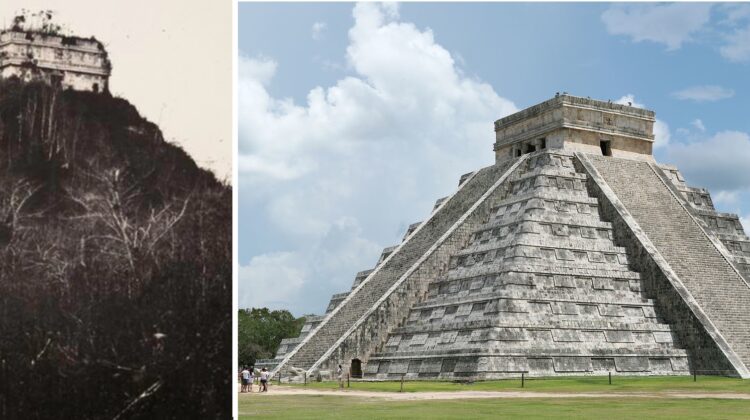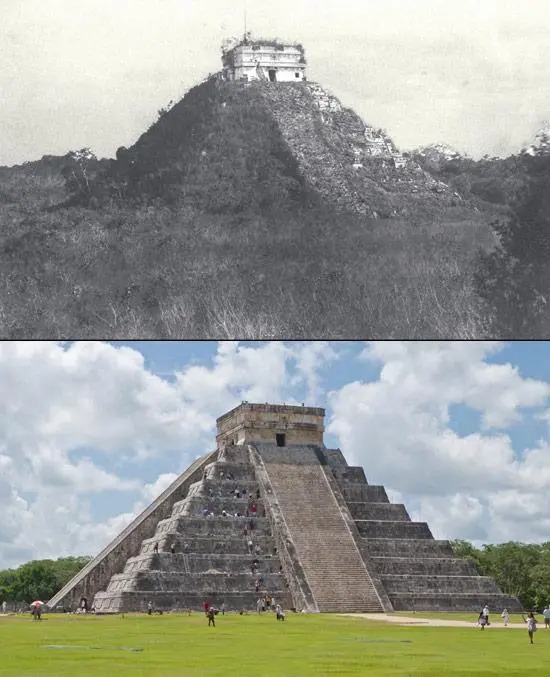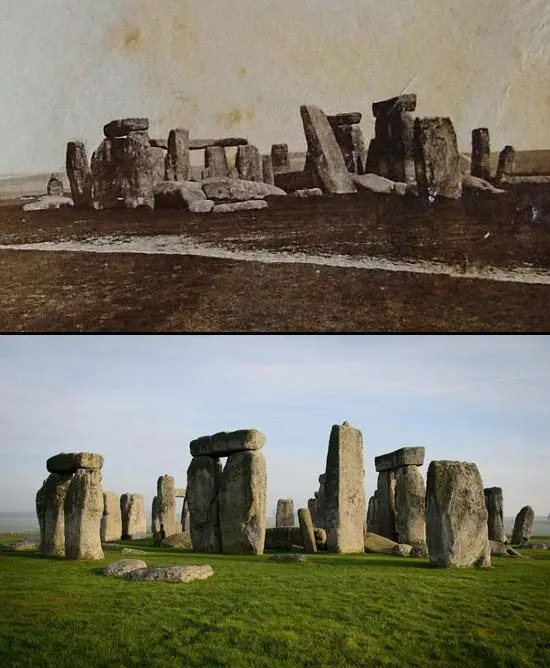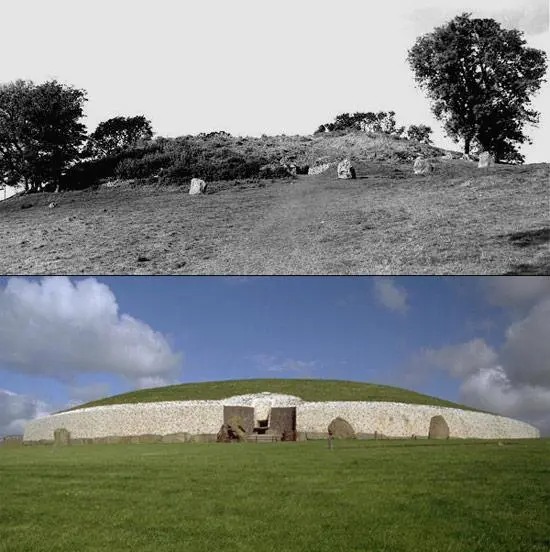
To most of us in the 21st century, the architectural ruins of the past possess somewhat of a magical aura. While the humans who built them have long since turned to dust, the buildings they left behind act as a portal through which we might better understand our long-dead ancestors – or, alternatively, allow us to mistakenly overlay our own beliefs upon them.
But until the 20th century, many of these ancient ruins stood in disrepair – whether due to their remoteness, or lack of the industrial machinery to fix them, as the image below of the Mexican site of Chichen Itza shows, it is only in recent times that we have been able to re-present these sites in pristine condition.

But how far should we go in rebuilding ancient sites, and how does the work we have done so far impact on our understanding of ancient cultures? Take for example, the Stonehenge of the 19th century, compared to the site now:

In placing the fallen megaliths into place, are we modifying both the past, and the passing of time? And, if we have done it, who else has done it since Stonehenge was first constructed. Alternatively, are we simply helping to preserve an important site for the future? But how far do we go to preserve things? The legs of the Great Sphinx in Egypt have become more brick than stone in recent years; given that restorations have been happening for millennia it does raise the question: at what point does the original disappear and a facsimile take its place?
This idea is taken to its limit when it comes to sites such as Newgrange in Ireland. The gleaming white wall that surrounds the entrance to Newgrange is a modern construction, despite the fact that debate continues as to whether the quartzite rocks found on the site were actually used to form a wall, or something else, such as a plaza surface.

But perhaps concerns over our ‘vandalism’ of ancient structures is an illusion…after all, in another four millennia, we will be considered yet another ancient people who modified an even more ancient structure, just as King Tuthmosis IV’s repairs to the Sphinx a thousand years after its construction (or at least, the orthodox date of construction…) have now become a part of the monument as we know it.

Wauw
What a GREAT HISTORICAL GIFT
T H A N K Y O U
S O M U C H